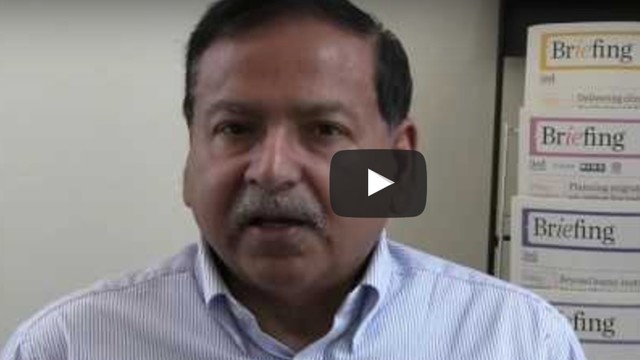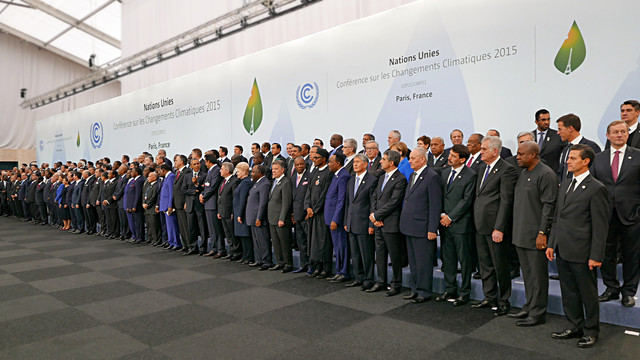Author Q&A: The political economy of low carbon resilient development
Neha Rai answers questions on a new book that highlights how low carbon resilient development approaches can reduce carbon emissions at the same time as increasing resilience to the impacts of climate change.
Efforts to tackle climate change have historically fallen into one of two separate camps: mitigation or adaptation. But over the past decade, a growing number of national and international policymakers have begun planning and implementing strategies that try to do both at the same time.
So-called low carbon resilient development (LCRD) approaches aim to reduce carbon emissions while simultaneously building up resilience to the impacts of climate change and delivering sustainable development.
But can such approaches work? And what shapes these approaches?
According to a new book, 'The political economy of low carbon resilient development', LCRD planning and implementation stands a much better chance of success – particularly in Least Developed Countries – if it is steered by an understanding of the actors on the ground, of their values, knowledge, discourses, resources and power relationships at play.
In this Q&A, Neha Rai, a senior researcher in IIED's Climate Change research group and one of the book's editors, discusses the how and the why.
Why is low carbon resilience planning so important to the Least Developed Countries (LDCs)?
NR: Communities living in the world's least developed nations are both poor and vulnerable to the impacts of climate change. Adaptation in these countries is a pre-requisite to development – to securing livelihoods, improving socio-economic wellbeing and reducing poverty.
In a low emissions future, mitigation will also have a key role to play, and may also offer potential synergies with national development priorities such as energy access. LCRD offers a broad framing to bring all these agendas together. Done effectively, it could prove a triple-win approach for the LDCs.
How does LCRD work in practice?
NR: LCRD – particularly in low-income countries – is still a relatively new concept and as such, is understudied. When we began the research for our book, only a limited number of LDCs had national LCRD plans in place. We chose to focus on four: Bangladesh, Ethiopia, Nepal and Rwanda.
Each of these countries is an early adopter of climate change policy. But each is different in terms of the climate risks they face, their overall approach to climate change policies, their financing arrangements, and their politics and political systems.
Each [country] is different in terms of the climate risks they face, their overall approach to climate change policies, their financing arrangements, and their politics and political systems
This diversity in experience allowed us to examine the rise of LCRD plans across different contexts. And what is clear from our findings is that there is no single recipe for delivering LCRD. Rather, the way in which LCRD is designed, developed and implemented depends on a wide range of 'political economy factors' – people, ideas and incentives, and the interactions between them.
How can an understanding of a country's political economy strengthen LCRD planning and implementation?
NR: Political economy analysis is widely used in the social sciences to explore the underlying drivers and power structures that either enable or constrain the policy and planning process. In our book, we use it to explore the complex political and economic processes involved in planning for LCRD in our focus countries, with the aim of understanding how ideas, power and resources interact to produce different LCRD outcomes.
Unpacking these political economy dynamics enables national governments to understand the factors that constrain or promote an effective and equitable approach.
Deployed at appropriate stages of the policy cycle, these findings can be used to improve both the planning and implementation of LCRD. For example, by channelling resources toward people with a shared vision, governments can strengthen coalitions and generate synergies that move the LCRD agenda forward.

By using policy and economic incentives that encourage inclusive decision making, policymakers can improve cooperation and ensure LCRD is representative across stakeholder groups. And by seeking out competing or conflicting views, governments manage stakeholders' expectations, reduce the risk of disruption, and carve out a space in which objections and grievances can be discussed and addressed.
In your book you emphasise the need for understanding discourses that shape the LCRD agenda – why is that so important?
NR: Any LCRD proposal can be expected to have its proponents and its opponents that coalesce around particular narratives. Taking an LCRD policy forward without time-consuming disputes relies on a governments' ability to achieve consensus among all these stakeholders.
This involves acknowledging those coalitions that seek to slow down decision making while fostering joint action among those that are supportive. Discourse analysis is critical because it can essentially be used to map out the prevailing patterns of support and dissent – and in so doing, enable the government to plan an appropriate response.
Discourse analysis is critical because it can essentially be used to map out the prevailing patterns of support and dissent
Discourse analysis highlights potential barriers to implementation (in the form of conflicting views) early on, and helps to ensure that alternative views are not excluded.
We know from our research that storylines and coalitions play a large role in shaping the priorities within any LCRD agenda – and in galvanising the support needed to implement them. Where an LCRD agenda is still emerging, governments can move the agenda forward by helping loose discourse groups to develop into more concrete and stable policy networks.
Can LCRD plans really benefit the poorest and most vulnerable?
NR: By aligning incentives, governments can help ensure an equitable and inclusive approach to LCRD. Our analysis of renewable energy access interventions in low-income communities – based on understanding political economy dimensions of climate finance – shows how incentives can be structured to reach the very poorest in society.
This involves using high-level policy incentives, recruiting people with the right capacities and incentives to reach target groups, and tailoring products and services to the needs of potential end users.
The Political Economy of Low Carbon Resilient Development, edited by Neha Rai, Susannah Fisher (2016), available to purchase from Routledge, 172 pages, hardback (ISBN: 978-1-13-893297-5)/eBook (ISBN: 978-1-31-567928-0)


